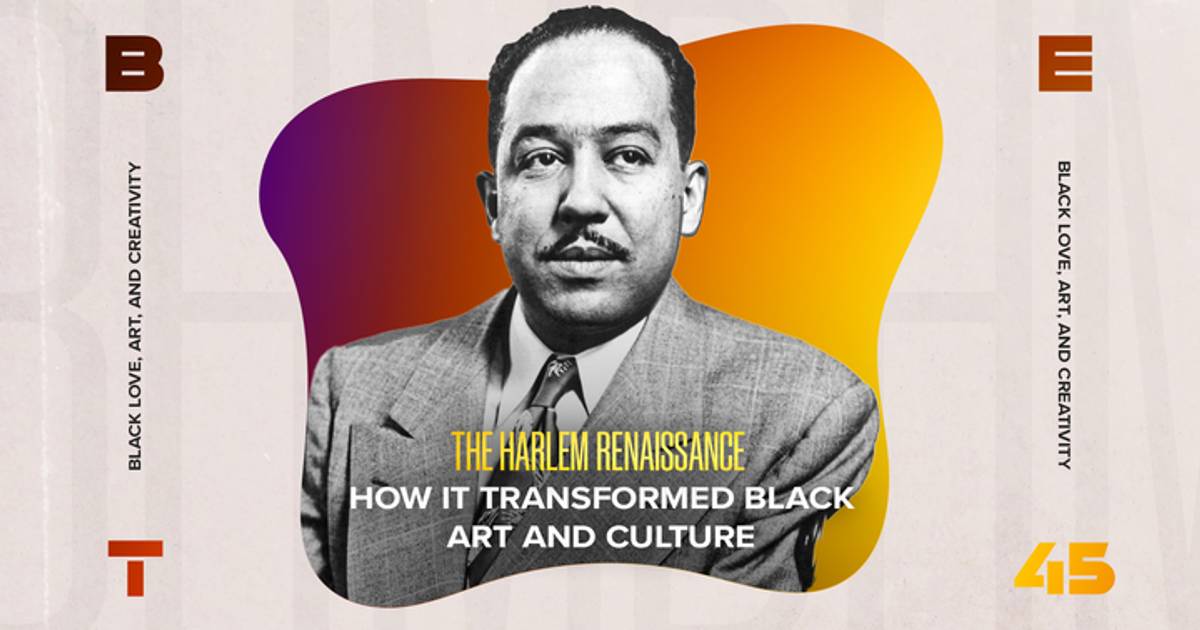
The Harlem Renaissance was one of the most significant cultural movements exemplifying the diversity of the Black experience in America. Lasting from the late 1920s to the 1930s, the movement would spawn and further cultivate what is described today as “Black Excellence.”
Comprised of writers, visual artists, actors, dancers, and musicians, the movement produced art that celebrated Black identity and culture, in the face of American institutional racism. The pulse of this artistic and intellectual expansion was located in Harlem the “Black Metropolis.” The movement as described by Langston Hughes was an “expression of our individual dark-skinned selves.”
But how did it all begin?
While many debate the exact genesis of the Harlem Renaissance, one of the linchpin moments was when W.E.B. DuBois declared in 1920, “I think we have enough talent to start a renaissance.”
Although the dates of the movement’s launch have been debated for decades, undoubtedly, the influence and intellectual shaping of the movement was manifested through the work of Alain Leroy Locke.
Alain Locke: The Dean of the Harlem Renaissance
Born on September 13, 1885, Locke was a philosopher, writer, educator, and he was considered the “Dean” of the Harlem Renaissance. A distinguished scholar of the highest order, he was the first African American Rhodes Scholar and chaired the Department of Philosophy at Howard University. Before it was deemed the Harlem Renaissance, it was simply known as “the New Negro Movement”–a classification based on Locke’s work.
“The New Negro: An Interpretation,” a 1925 anthology, gave voice and platform to some of the greatest writers of the era–Langston Hughes, Countee Cullen, Jean Toomer, Jessie Redmon Fauset, Claude McKay, and Zora Neale Hurston all contributed to the anthology. This, Locke’s seminal text, was the intellectual undergirding of the movement. “The New Negro,” introduced the world to the burgeoning Harlem Renaissance, marking the emergence of a new identity of “unforgivable Blackness”.
Jeffrey C. Stewart, author of The New Negro: The Life of Alain Locke, gives Locke his flowers as he is sometimes lost in the historical rendering of this critical movement that he helped to create.
Stewart writes, “Locke became a ‘mid-wife to a generation of young writers,’ as he labeled himself, and a catalyst for a revolution in thinking called the New Negro. The deeper truth was that he, Alain Locke, was also the New Negro, for he embodied all of its contradictions as well as its promise.”
Stewart continues, “Rather than lamenting his situation, his marginality, his quiet suffering, he would take what his society and his culture had given him and make something revolutionary out of it.”
It’s safe to say that without Alain Locke, the Harlem Renaissance could have been a different movement, perhaps even less significant. His flowers are long overdue.
Significant Works of the Harlem Renaissance
Literary masterpieces that survive as historical markers and educational texts such as The Weary Blues by Langston Hughes, Their Eyes Were Watching God by Zora Neale Hurston, Home to Harlem by Claude McKay, Cane by Jean Toomer, Copper Sun by Countee Cullen, and the stunning paintings of Aaron Douglass are just some of the hallmarks of the Harlem Renaissance.
In terms of musical artistry, legendary musicians such as Duke Ellington, Billie Holiday, Louis Armstrong, Cab Calloway, Josephine Baker, Fats Waller, and Bessie Smith expanded, complicated, and enriched the genres of jazz, and blues and displayed the innovative and athletic artistry of Black dancing.
Lasting Legacy of the Harlem Renaissance
While the movement itself began to lose momentum in the mid-1930s due to the Great Depression and the Harlem Riot of 1935, the Harlem Renaissance curated a blueprint that would be followed by other cultural movements by Black Americans. The Civil Rights Movement, the Black Arts Movement, the Black Feminist Movement, the Black Poetry Movement, and the LGBTIQIA community all owe a tremendous debt of gratitude to the ground laid by the Harlem Renaissance.
The undeniable and ongoing legacy of the Harlem Renaissance still reverberates today. The works and iconic figures of The Harlem Renaissance continue to shape our understanding of the construction of race, racial and sexual identity, and the power of artistic expression. In the aftermath of the movement, the themes that the transcendent artists touched on gave birth to another generation of artists committed to expressing their Blackness as they saw fit.
Although Black citizens were subject to racial terrorism, liberated Black genius was on full display in Harlem and that genius influenced and continues to influence the entire world.
